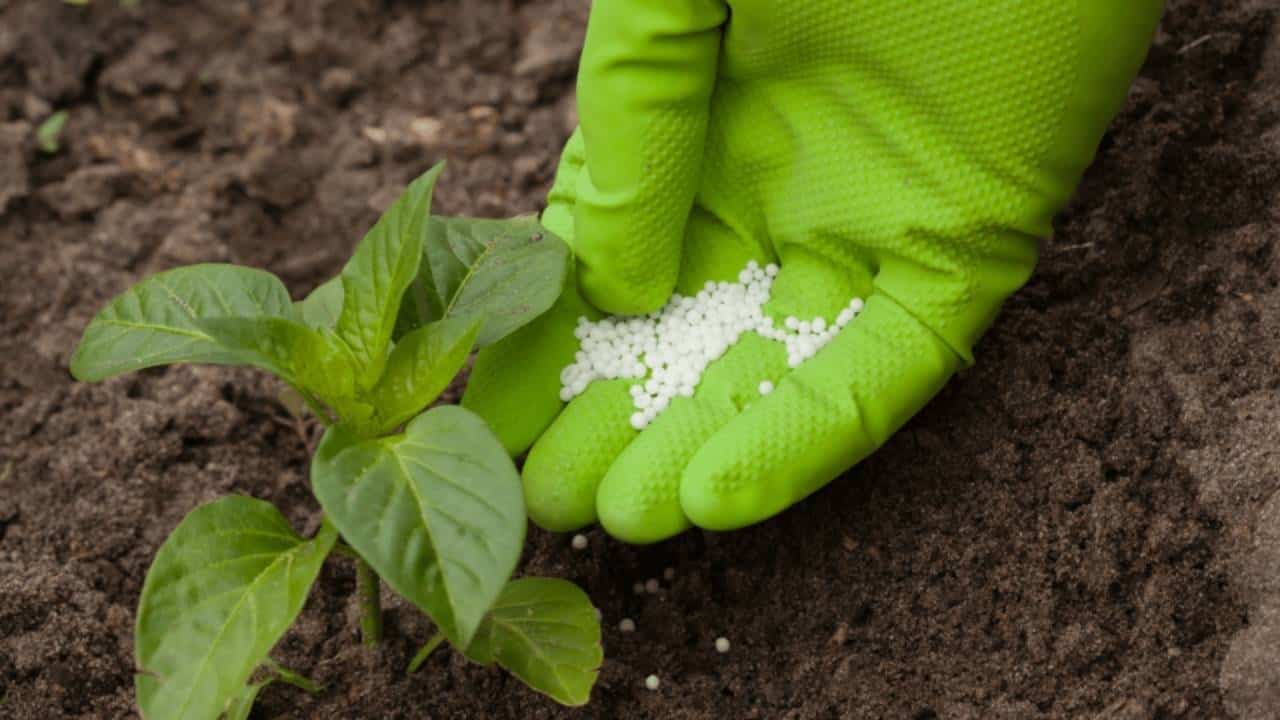Home>Gardening Basics>Understanding Soil>What Is A Good CEC For Soil


Understanding Soil
What Is A Good CEC For Soil
Modified: February 10, 2024
Learn the importance of understanding soil and how it impacts plant growth. Discover what makes a good CEC for soil and why it's crucial for healthy plants.
(Many of the links in this article redirect to a specific reviewed product. Your purchase of these products through affiliate links helps to generate commission for Chicagolandgardening.com, at no extra cost. Learn more)
Table of Contents
Introduction
Soil is a vital component of our natural environment, playing a crucial role in sustaining plant growth and supporting ecosystems. Understanding the properties and characteristics of soil is essential for successful agriculture, gardening, and land management practices. One such property that significantly impacts soil quality and fertility is the Cation Exchange Capacity (CEC).
CEC refers to the soil’s ability to retain and exchange cations, positively charged ions important for plant nutrition, such as calcium, potassium, magnesium, and ammonium. It measures the soil’s capacity to hold onto essential nutrients and make them available for plant roots to uptake. In simpler terms, CEC determines the soil’s ability to hold nutrients like a sponge, preventing them from being washed away by rainfall or leaching into deeper layers of the soil profile.
In this article, we will delve into the concept of CEC, exploring the factors that influence its value and understanding its significance in soil health. We will also discuss how to determine what constitutes a good CEC for soil, allowing us to make informed decisions in managing and improving soil fertility.
Understanding CEC for Soil
CEC is a fundamental property of soil that measures its ability to retain and release cations. Cations are essential nutrients for plants, and their availability in the soil directly affects plant growth and development. The CEC value provides insight into how well a particular soil can hold onto and supply these nutrients to plants.
Cations in the soil are typically attracted to negatively charged soil particles, such as clay minerals and organic matter. These particles have an affinity for cations because their surface contains negatively charged sites that attract and hold onto them. The CEC value indicates the total sum of exchangeable cations present in the soil, measured in milliequivalents per 100 grams of soil (meq/100g).
High CEC soils have a greater capacity to hold and exchange cations, providing a steady supply of nutrients to plants. This is beneficial for plant growth, as it reduces the risk of nutrient deficiency. On the other hand, low CEC soils have a limited capacity to retain and supply nutrients, making them more susceptible to leaching and nutrient loss.
It’s important to note that CEC is influenced by several factors, including soil texture, organic matter content, clay mineralogy, and soil pH. Soil texture refers to the relative proportion of sand, silt, and clay particles in the soil. Generally, soils with higher clay content have a higher CEC due to the presence of fine-textured particles with more surface area to hold cations. Organic matter also plays a critical role in CEC, as it can significantly increase the soil’s ability to retain and supply nutrients. Additionally, soil pH affects CEC, with acidic soils having lower CEC values compared to neutral or alkaline soils.
Understanding the CEC of soil is crucial for nutrient management and fertility planning. By assessing the CEC value, farmers and gardeners can determine the soil’s ability to retain nutrients and make informed decisions on fertilizer application rates and timing. Moreover, it helps identify soil conditions that may require amendments to optimize nutrient availability for plants.
Factors Affecting CEC
The Cation Exchange Capacity (CEC) of soil is influenced by several factors, each playing a role in determining the soil’s ability to retain and exchange nutrients. Understanding these factors is crucial for optimizing soil fertility and nutrient management practices.
1. Soil Texture: Soil texture refers to the proportions of sand, silt, and clay particles in the soil. Clay particles have a greater surface area compared to sand and silt particles, allowing them to hold more cations. Therefore, soils with higher clay content tend to have a higher CEC. In contrast, sandy soils with larger particles have a lower CEC due to their reduced capability to retain nutrients.
2. Organic Matter Content: Organic matter is a critical component of soils, providing numerous benefits, including improved soil structure, water-holding capacity, and nutrient retention. Organic matter is negatively charged and acts as a sponge, holding onto cations and increasing the soil’s CEC. Soils with higher organic matter content generally have a higher CEC, as organic matter can retain and release nutrients over an extended period.
3. Clay Mineralogy: Different types of clay minerals have varying CEC values. For example, clay minerals like montmorillonite and vermiculite have high CEC due to their crystal structure and high surface charge. On the other hand, kaolinite clay has a lower CEC. The type and abundance of clay minerals present in the soil will influence CEC.
4. Soil pH: Soil pH plays a significant role in the CEC of soil. In acidic soils, hydrogen ions (H+) on the soil particles can displace cations, reducing the overall CEC. Conversely, in alkaline soils, the presence of hydroxyl ions (OH-) can replace hydrogen ions, increasing the CEC. Optimal soil pH levels (around neutral) can maximize the CEC and nutrient availability.
5. Mineral Weathering: Over time, mineral weathering can affect CEC. Some minerals, like feldspar and mica, release cations as they weather, contributing to the soil’s CEC. The extent of weathering and the presence of these minerals in the soil will impact the overall CEC value.
It is important to consider these factors when assessing soil CEC as they provide valuable insights into the soil’s nutrient-holding capacity. By understanding the influences on CEC, farmers, gardeners, and land managers can make informed decisions regarding soil amendments, nutrient management, and maintaining optimal soil fertility.
Importance of CEC in Soil
The Cation Exchange Capacity (CEC) of soil is a crucial parameter that impacts soil fertility and nutrient availability. Understanding the importance of CEC can help farmers and gardeners make informed decisions in managing their soil and optimizing plant growth.
1. Nutrient Retention: Soils with higher CEC have a greater ability to retain essential nutrients, preventing them from being washed away by rainfall or leached into deeper soil layers. This is particularly important in areas with high precipitation or sandy soils, where nutrients can easily be lost. The CEC acts like a reservoir, holding onto nutrients and releasing them gradually to plant roots as needed.
2. Nutrient Availability: CEC directly influences the availability of nutrients to plants. The retained cations on the soil particles are exchanged with the plant’s root hairs, allowing for the uptake of essential nutrients. Soils with a higher CEC value can supply a steady and consistent stream of nutrients to plants, reducing the risk of nutrient deficiencies and promoting healthy growth.
3. Fertilizer Management: Understanding the CEC of soil is crucial for efficient fertilizer management. By knowing the soil’s CEC, farmers and gardeners can determine the appropriate fertilizer application rates and timing. Soils with higher CEC require fewer fertilizer applications as they can hold onto nutrients for a longer period. On the other hand, soils with lower CEC may need more frequent and targeted fertilization to ensure optimal nutrient availability.
4. Soil Amendment Decisions: The CEC of soil plays a role in determining the need for soil amendments. Soils with low CEC can benefit from amendments like organic matter additions or clay mineral amendments to improve nutrient retention and availability. Additionally, knowing the CEC value can guide decisions on liming materials to adjust soil pH, as pH affects CEC.
5. Soil Health and Sustainability: Maintaining a good CEC value in soil is crucial for long-term soil health and sustainability. Soils with optimal CEC provide an environment that supports microbial activity, nutrient cycling, and overall soil biological processes. This contributes to improved soil structure, water-holding capacity, and nutrient efficiency, leading to healthier plants and sustainable agricultural practices.
Overall, the Cation Exchange Capacity (CEC) of soil is a key factor in soil fertility and nutrient management. Understanding the importance of CEC allows for informed decision-making in agricultural and gardening practices, optimizing nutrient availability, reducing nutrient loss, and promoting sustainable soil health.
Determining a Good CEC for Soil
When it comes to determining a good Cation Exchange Capacity (CEC) value for soil, several factors need to be considered. It is important to note that the optimal CEC will vary depending on the specific needs and requirements of the plants being grown and the intended use of the soil. However, there are some general guidelines that can assist in evaluating the CEC of soil.
1. Soil Type: Different soil types will have different natural CEC ranges. For example, clay soils tend to have higher CEC values due to their ability to retain more cations compared to sandy soils. Understanding the characteristics of the soil type and its natural CEC range can help in determining what is considered a good CEC value.
2. Desired Crop or Plant Requirements: Different crops have varying nutrient requirements. Some plants, like fruits and vegetables, require higher nutrient availability and would benefit from soils with higher CEC values. However, some native plants or less demanding crops may thrive in soils with lower CEC values. Understanding the nutrient needs of the intended plants is essential in determining a good CEC value.
3. Soil Management Practices: The CEC value of soil can be influenced by management practices such as organic matter additions, clay amendments, and pH adjustments. By implementing appropriate soil management practices, it is possible to improve the CEC and optimize nutrient availability for the intended plants. This can be achieved through regular soil testing and the implementation of recommended amendments.
4. Environmental Factors: Environmental factors, such as climate and rainfall patterns, can have an impact on the CEC value of soil. Areas with high rainfall may require soils with higher CEC values to prevent nutrient leaching. Additionally, soils in arid regions may need different CEC values to ensure efficient nutrient retention and availability.
5. Comparison to Similar Soils: A useful approach to determining a good CEC value is to compare it to soils with similar characteristics and management practices. This can be done by consulting soil experts, examining local agricultural data, or observing successful plant growth in similar soils. These comparisons can provide valuable insights into what constitutes a good CEC value in a given context.
Ultimately, there is no one-size-fits-all answer to what constitutes a good CEC for soil. It depends on various factors specific to the soil type, intended plants, management practices, and environmental conditions. By considering these factors and evaluating the specific needs of the situation, it is possible to determine a good CEC value for soil and optimize nutrient availability for successful plant growth.
Conclusion
The Cation Exchange Capacity (CEC) is a vital property of soil that influences nutrient retention and availability, making it a crucial factor in soil fertility and plant growth. By understanding CEC and its significance, farmers, gardeners, and land managers can make informed decisions to optimize soil health and nutrient management practices.
CEC is influenced by various factors, including soil texture, organic matter content, clay mineralogy, and soil pH. Soils with higher CEC values have a greater capacity to hold onto and exchange cations, providing a steady supply of essential nutrients to plants. On the other hand, soils with lower CEC values may require additional nutrient inputs and management strategies to ensure optimal nutrient availability.
Importantly, the determination of a good CEC for soil depends on factors such as soil type, plant requirements, soil management practices, and environmental conditions. By considering these factors, one can assess whether the CEC value is appropriate for the intended use and optimize the soil’s nutrient-holding capacity.
Understanding and managing CEC can greatly benefit agricultural practices, gardening endeavors, and land management strategies. It allows for efficient fertilizer use, reduces nutrient loss through leaching, and supports sustainable soil health and productivity.
In conclusion, an appreciable understanding of CEC empowers individuals to make well-informed decisions about soil management, leading to more successful cultivation and healthier plants. By recognizing the importance of CEC and incorporating this knowledge into soil management practices, we can contribute to the long-term sustainability of our agricultural systems and protect our precious natural resources.










